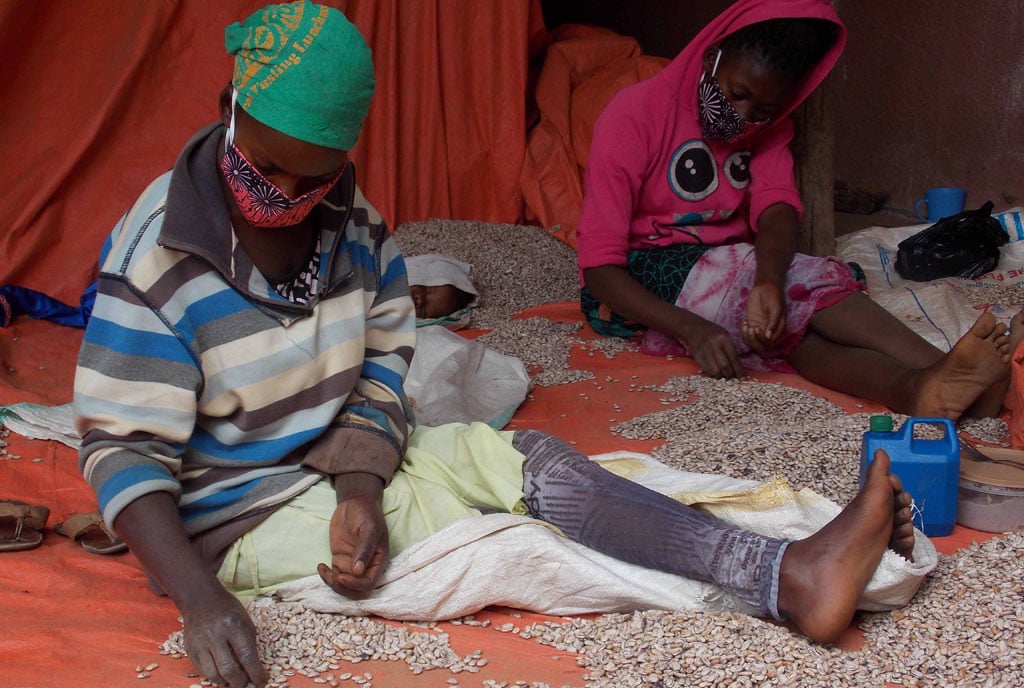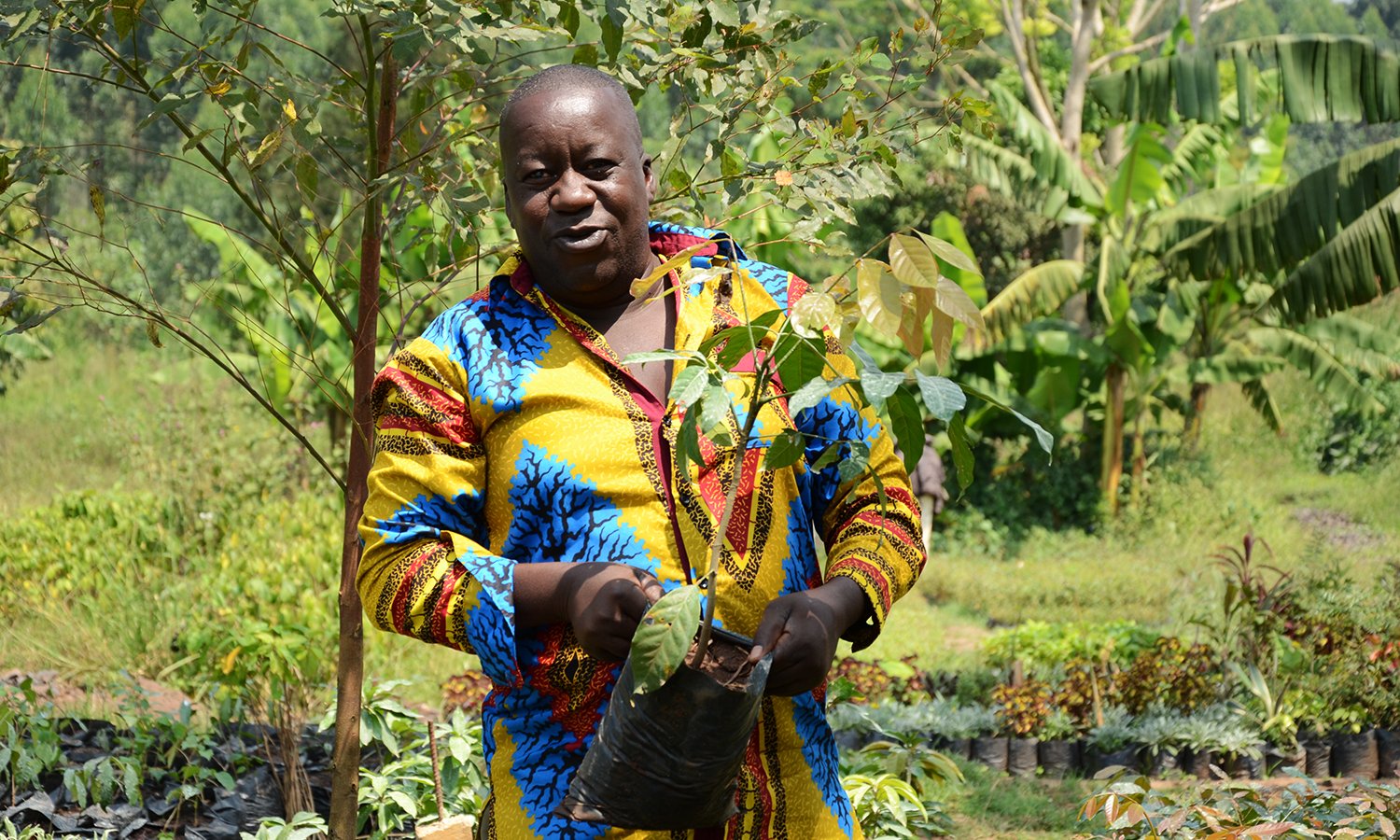
A farmer sorts beans for planting ahead of rainy season. PHOTO/MICHEAL J SSALI
|Farming
Prime
How farmers use ancient methods to preserve seeds
What you need to know:
- The Food and Agriculture Organisation (FAO) estimates that pathogens, wild animals, birds, rodents, parasites and bacteria are altogether responsible for global crop losses ranging from 20 t0 40 percent.
Farming has been carried out for thousands of years and mankind has all along been struggling to overcome pests. Any organism that is destructive to crops may be described as a pest. They are a nuisance to farmers because they destroy what the farmer is struggling to grow for food or for cash.
The damage caused may be direct if they eat or destroy the crop or indirect if they cause a disease that eventually kills or weakens the crop.
Pests are mainly insects such as nematodes, mites, weevils and worms but birds and rodents are also referred to as pests. Today pests include those human beings who visit other people’s farms to steal crops.
The Food and Agriculture Organisation (FAO) estimates that pathogens, wild animals, birds, rodents, parasites and bacteria are altogether responsible for global crop losses ranging from 20 t0 40 percent.
Multiplication of pests
Here in the tropics, according to Ngugi D N, Karau P K and Nguyo W (East African Agriculture), the warm temperature and the humid climate facilitate multiplication of pests and as much as 20 to 30 percent of harvested produce can be lost during storage due to pest damage.
They are a big nuisance that is quite costly to fight. But how did our forefathers deal with the problem before the invention of modern pesticides that many people fear to be harmful to the environment and the consumers?

Christine Rutto holds a sheaf of sorghum that has been preserved through smoking. PHOTO/MICHEAL J SSALI
How were they able to preserve the seeds that they planted in the rainy seasons that were often preceded by long droughts? A severe attack of pests on tomatoes may cause a 70 percent loss or more on crop yield.
For crops such as beans and maize if the pest attack is severe, whether in the field or during storage, the ultimate consequence could be loss of even the seed to plant in the next season in communities that routinely depend on seeds saved from the previous harvests. Saving seed was common practice.
Preserving seeds
78-year-old farmer, Athanasius Buli Ggwanga of Bbulamazzi in Kalisizo Town Council, Kyotera District has told Seeds of Gold, “Most of our traditional vegetable crops such as nakati, bbugga, jjobyo, doodo could not be stored in granaries. What our grandparents used to do was to have them dried and tied on the ceiling of their grass thatched houses. Remember that cooking of food was done inside the same houses and there was always smoke hanging about in the house. There was also soot coating of the entire roof. All insects abhor smoke and soot and therefore it became extremely hard for the stored crops to be invaded by any pests. That way our grandparents were able to store seeds for planting. This was done also for crops like sorghum, millet, and maize.”
He said most seed saving and storage was done by placing the seeds or their containers on top of the firewood rack in the kitchen so that the smoke and soot would keep away all insects.
He also said that another way of keeping seed was to use dry bamboo containers. “After putting the legume or grain in the bamboo container it had to be tightly closed,” he said. “Tight closure would deny the pests oxygen and they would suffocate.”
Hides and skins
Buli Ggwanga went on to mention the use of hides and skins to keep seeds. He said the skins would be turned into bags and closed tightly by tying. The skins and hides could not let any air or oxygen to pass through and no pests would thrive. He further said that often the seeds would be mixed with ash and anthill soil and placed in a dry place like the floor of the house that has been plastered with cow dung.
“But as a rule if the farmer did not carry out any of the mentioned practices it was always important to regularly put out the seeds under the sun for drying. Continuous drying minimizes chances of pest attack, germination, and rotting of seeds.”
Season lending
Another way of seed preservation that Buli Ggwanga mentioned was what he referred to as ‘season lending’. The farmers knew for example that their colleagues in a far off area wanted seeds to plant and were expected to harvest in a particular period of the year. They would lend to them some seeds to plant expecting to be paid back the same amount of seed when their turn came for planting.

Farmers sort their bean seeds. PHOTO/MICHEAL J SSALI
Charles Katabalwa, a trained agriculturist and Managing Director of SAWA Agricultural Development Company Limited, Mpigi District says, “One simple way to preserve crops such as beans or maize is not to winnow the harvested crop. Just keep them with bits of the husks. It will take much longer to get attacked by pests.” He goes on to say that keeping the maize on the cob without plucking the grain off gives it a longer shelf life.
Control moisture
Katabalwa goes on to say that before harvesting the crop farmers should ensure that it is really mature. “And once the crop is harvested it should be thoroughly dried up to moisture content 13 percent before storage. They may then mix the crop with dry pest repellant tree leaves like neem tree or cypress (cedero), hot pepper, and ash.”
He says the grain or legumes stand a big chance of survival under such conditions. He also says putting the grain or legumes in a dry clay pot and covering it tightly is quite preventive.
“In the past the farmers would get logs and line them on the floor before placing on them the baskets of harvested grain. That way, the stored crops could not take any moisture from the ground. He puts a lot of emphasis on storing grain in moisture free conditions."
“Moisture is bad for grain as it can cause the development of aflatoxins in the food crop. He said eating grain or legumes infested with aflatoxins can lead to cancer”. He also says putting harvested grain on the firewood rack in the kitchen greatly reduces the possibility of pest attack since smoke drives away insects including pests.
Cutting shoots
Some planting material was clonally obtained by cutting shoots from the parent plant without a lot of worry about their preservation. Sweet potato vines were obtained from the mother plant just as was the case for plantain.
In modern farming seed companies coat seed with insecticides to protect it from pests.

Joseph Kasekende, a farmer, in Kyotera District, demonstrates potato varieties and the vines to plant. PHOTO/MICHEAL J SSALI
Saving seeds from previous harvests is being discouraged because often the yields are rather poor. Farmers are encouraged to have a budget for buying clean, hybrid seeds, every planting season because they are high yielding and tolerant to harsh climatic conditions and disease attack.




